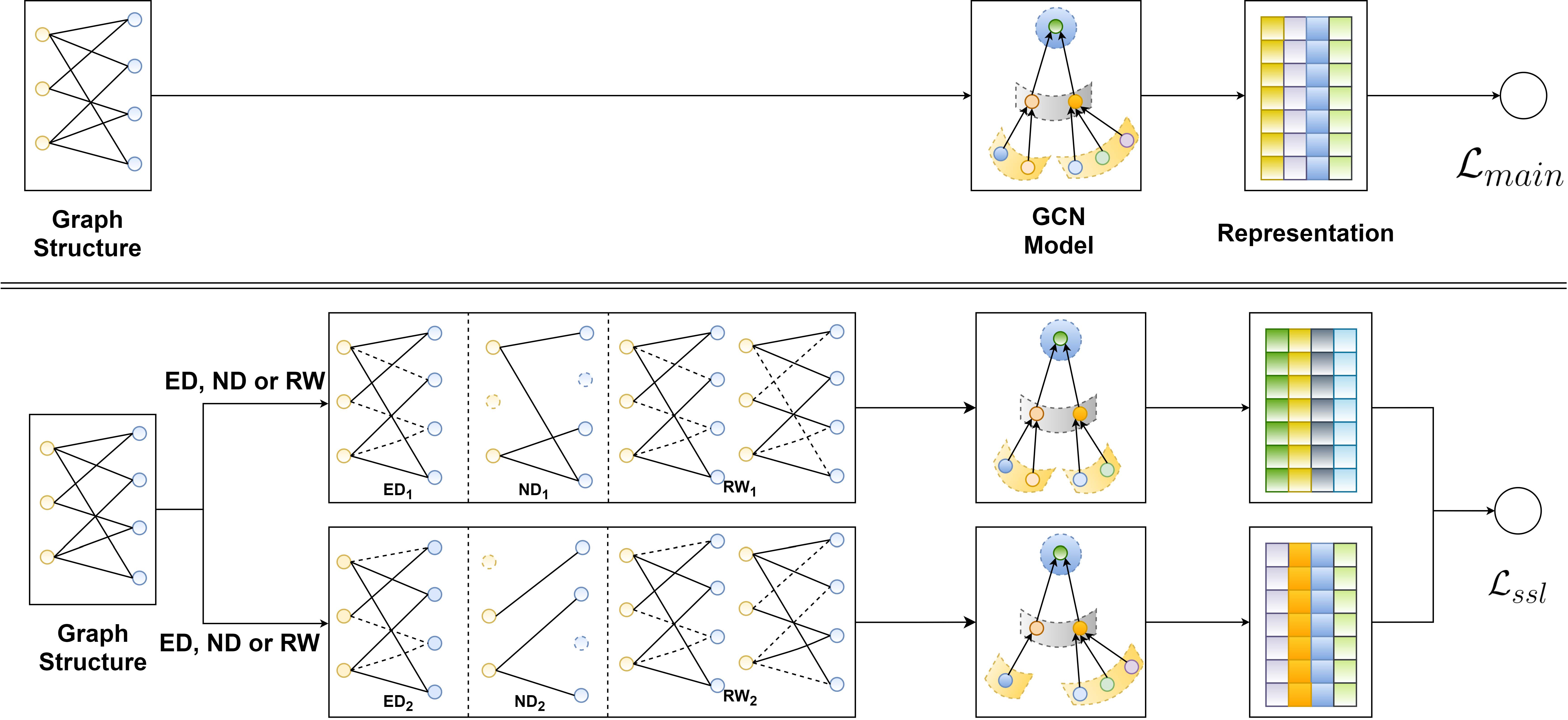SGL¶
Introduction¶
Title: Self-supervised Graph Learning for Recommendation
Authors: Jiancan Wu, Xiang Wang, Fuli Feng, Xiangnan He, Liang Chen, Jianxun Lian, and Xing Xie
Abstract: Representation learning on user-item graph for recommendation has evolved from using single ID or interaction history to exploiting higher-order neighbors. This leads to the success of graph convolution networks (GCNs) for recommendation such as PinSage and LightGCN. Despite effectiveness, we argue that they suffer from two limitations: (1) high-degree nodes exert larger impact on the representation learning, deteriorating the recommendations of low-degree (long-tail) items; and (2) representations are vulnerable to noisy interactions, as the neighborhood aggregation scheme further enlarges the impact of observed edges. In this work, we explore self-supervised learning on useritem graph, so as to improve the accuracy and robustness of GCNs for recommendation. The idea is to supplement the classical supervised task of recommendation with an auxiliary selfsupervised task, which reinforces node representation learning via self-discrimination. Specifically, we generate multiple views of a node, maximizing the agreement between different views of the same node compared to that of other nodes. We devise three operators to generate the views — node dropout, edge dropout, and random walk — that change the graph structure in different manners. We term this new learning paradigm as Self-supervised Graph Learning (SGL), implementing it on the state-of-the-art model LightGCN. Through theoretical analyses, we find that SGL has the ability of automatically mining hard negatives. Empirical studies on three benchmark datasets demonstrate the effectiveness of SGL, which improves the recommendation accuracy, especially on long-tail items, and the robustness against interaction noises.

Running with RecBole¶
Model Hyper-Parameters:
type (str): The operators to generate the views.'ED'stands for edge dropout mode.'ND'stands for node dropout mode.'RW'stands for random walk mode. Range in['ED', 'ND', 'RW']. Defaults to'ED'.n_layers (int): The number of layers in SGL. Defaults to3.ssl_tau (float): The temperature in softmax. Defaults to0.5.embedding_size (int): The embedding size of users and items. Defaults to64.drop_ratio (float)The dropout ratio. Defaults to0.1.reg_weight (float): The L2 regularization weight. Defaults to1e-05.ssl_weight (float): The hyperparameter to control the strengths of SSL. Defaults to0.05.
A Running Example:
Write the following code to a python file, such as run.py
from recbole.quick_start import run_recbole
run_recbole(model='SGL', dataset='ml-100k')
And then:
python run.py
Tuning Hyper Parameters¶
If you want to use HyperTuning to tune hyper parameters of this model, you can copy the following settings and name it as hyper.test.
ssl_tau choice [0.1,0.2,0.5,1.0]
drop_ratio choice [0,0.1,0.2,0.4,0.5]
ssl_weight choice [0.005,0.05,0.1,0.5,1.0]
Note that we just provide these hyper parameter ranges for reference only, and we can not guarantee that they are the optimal range of this model.
Then, with the source code of RecBole (you can download it from GitHub), you can run the run_hyper.py to tuning:
python run_hyper.py --model=[model_name] --dataset=[dataset_name] --config_files=[config_files_path] --params_file=hyper.test
For more details about Parameter Tuning, refer to Parameter Tuning.
If you want to change parameters, dataset or evaluation settings, take a look at